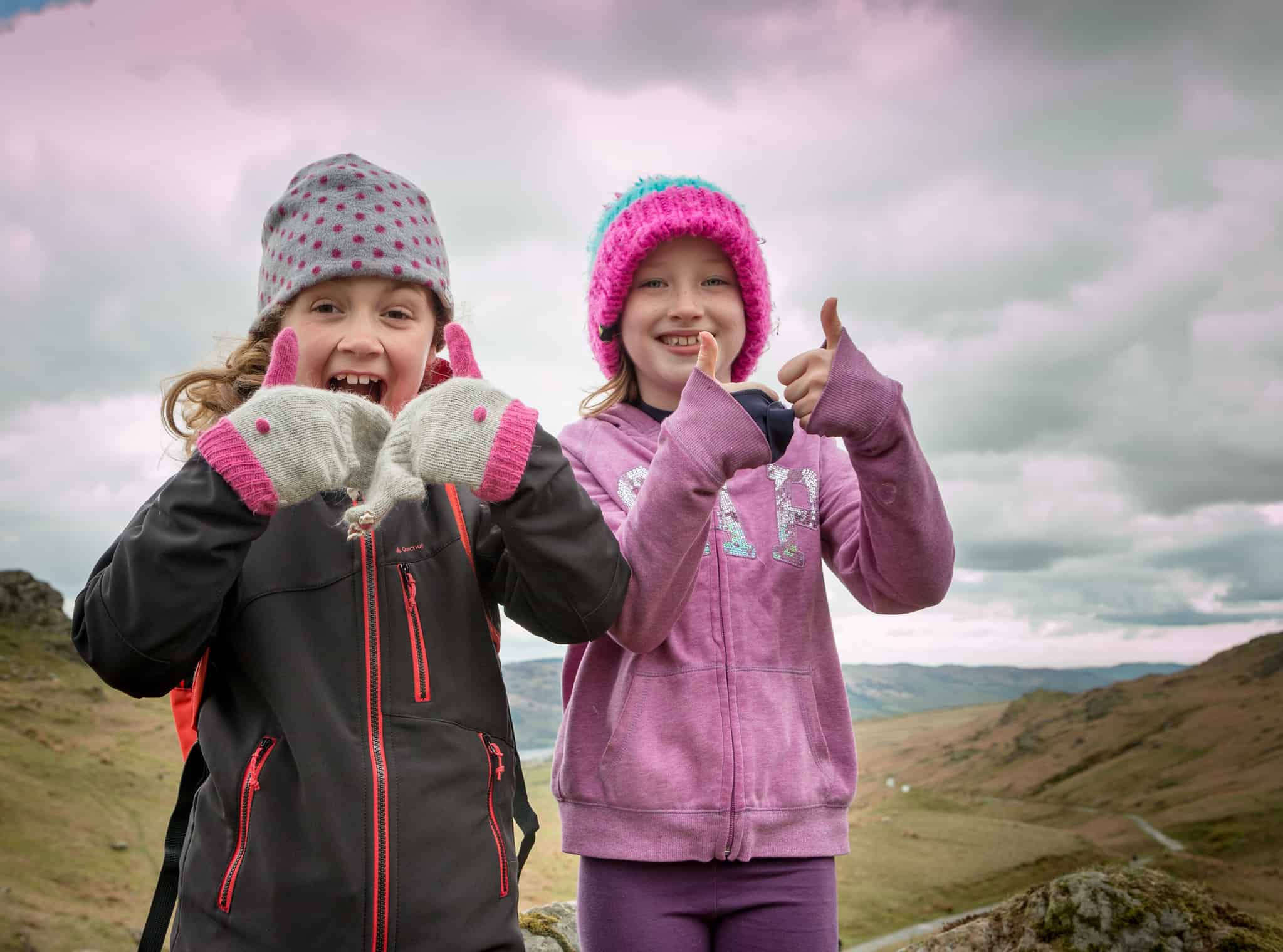Hiking is fun but can be a complete disaster without the right gear. For the kiddos, this will include good fitting shoes, correct clothing for the weather, and a properly fitting backpack. As far as hiking shoes, a comfortable pair of sneakers or hiking sandals is really all you need for the kids. Additionally, we always carry a small raincoat and an extra warm layer just in case.
And, to carry this, an age appropriate backpack made for the trails is a must. We find that backpacks need to have a sternum strap to secure the shifting weight and keep them comfortable.
We also find that a brimmed hat is essential for little ones if there are sunny patches along the trail.
Finally, kids need to stay hydrated. We have probably mentioned this about five times already, but it is essential for a happy hike. Choose a brightly colored hiking water bottle and let them decorate it with cool bottle stickers to encourage them to use it.

